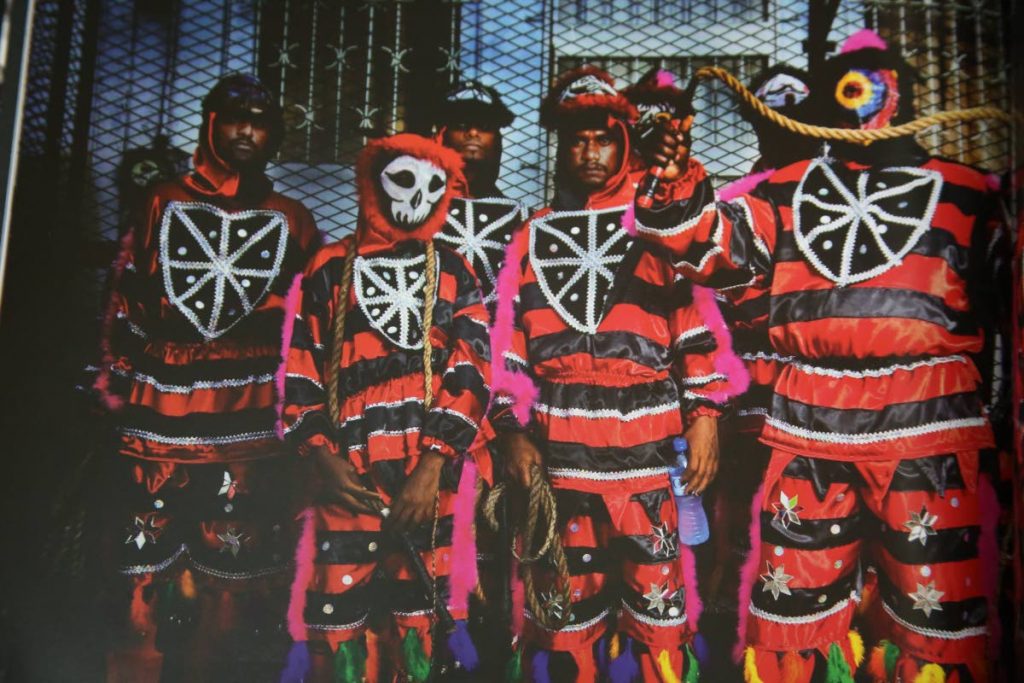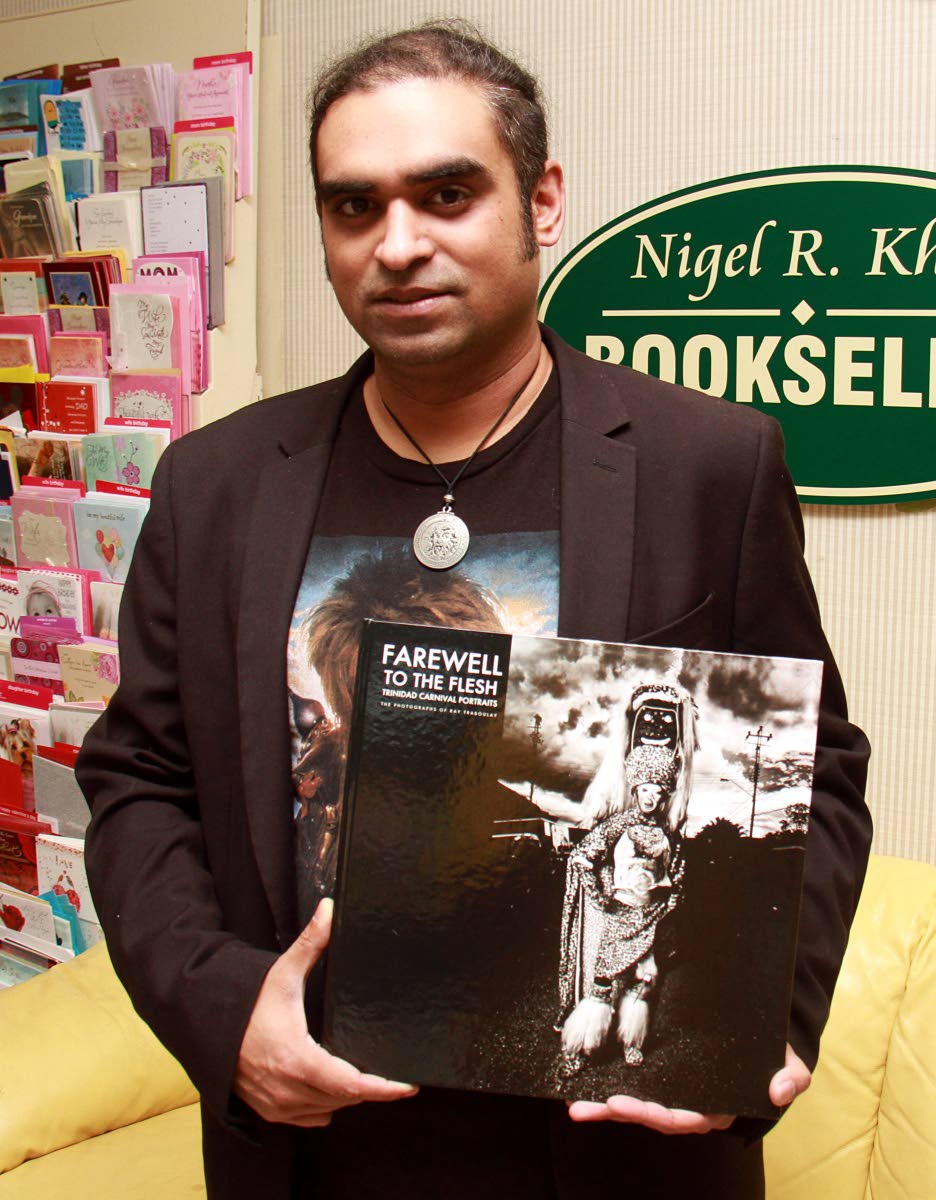Lensman discovers his Trini roots

YVONNE WEBB
THROUGH his camera lens, Rayhaan Traboulay has been able to rediscover his Trini roots and a world he never knew existed. The breakthrough has been cathartic for this 34-year-old, who was born in Brazil to Trinidadian parents Ian and Feroza Traboulay, formerly of San Fernando.
The photographer who goes by the nom de plume Ray has lived a culturally eclectic life. He grew up in places like Argentina, Paris, in the jungles of Borneo, Indonesia and Jakarta, where his father worked in the international oil industry. His travels also took him to India, Pakistan, England, Spain, Monaco, Singapore and Uruguay where he immersed himself in the cultures of these countries.
About eight years ago, however, Ray, who lives with his parents in Houston, Texas, realised the similarities of the Trinidadian heritage to other cultures. It dawned on him that he had never explored or understood his own culture and he embraced the opportunity to do so in 2010. The homecoming, the eye-opening process of self-discovery through the celebration of Carnival, was liberating and emotional at the same time.
Over the next three-years, Ray captured thousands of images of the culture and traditions. Seventy-two of those vivid images have been preserved in a glossy, hard-cover book titled Farewell to the Flesh. It is a fine-art, coffee-table book with some historical data and is available at Nigel Khan bookstores.
“I think those 72 images best capture the pantheon of the mas,” Ray said in a recent interview at Nigel Khan’s Gulf City store, San Fernando. He said the intention was never to publish the photographs in a book, but it took on a life of its own, thanks to the urgings of professionals and friends in the field.
“The intention was just for self-interest, to learn about the country for myself. The project was a form of self-discovery, because I did not know much of Trinidad, having grown up on the outside.
“I chose to focus on the traditional masqueraders because their characters, their depiction, told the history of the folklore of the culture of this nation. For example, from photographing the fancy Indians, which incorporated some elements of fantasy, I learnt about the indigenous peoples who were here before.
“It was the same with the sailor characters. I heard about the foreign navies which sent sailors here and the influence they had on the culture and the costumes.”
He said he was further moved by the fact that the costumes were being made by hand, which made them more original and authentic than the pretty mas.
“Mind you, I do like the pretty mas, but I have a stronger cultural content, relearning about the country I did not get to know while growing up. I wanted to document and capture the traditional mas because I realised some of the history was fading and wanted to leave this as a legacy.”
Ray said he became enthralled with the resemblances of Trini culture to that of Indonesia, where he spent time exploring Buddhism, shamanism and tribes such as the Dayaks in Borneo.
A graduate of Ryerson University, Toronto, with a bachelor’s in fine arts, majoring in photography with emphasis on portraiture and documentary, Ray started his career shooting commercials, fashion and ads.
In his first foray into capturing TT’s traditional characters, he employed some unorthodox methods to get the picture.
“Because I am trained in fashion and portraiture photography, the ideal was to get the characters in a studio. It would have been impossible to get them all in a studio in two days.”
So he decided to bring the studio to his subjects. “I basically wire-rigged a portable studio, battery charged generator, with one or two and at the most, three lights. It was really using fashion lighting on a documentary subject matter, but it worked out nicely for the aesthetics.”
Some of his photographs have been featured in a Brian Mac Farlane’s exhibition at the Royal Museum of Ontario and featured in Toronto’s applied arts magazine. His work has also made headlines in the Houston press arts section. Life-sized copies of his work were also used for several local events in Trinidad by the former People’s Partnership government. Ray is hoping to come to some kind of arrangement with government to promote his book, as well as with hotel chains and embassies.
He also shared some of his exploits while on the field, like the time he threw his back out and another time when he went under a fire blower to do a close-up shot. With the kerosene draining on him, Ray instructed the fire-blower to blow the flames towards him.
The result was a medical emergency for Ray’s singed face.
Another time, he said, he went into Laventille, “not knowing it was a dangerous place. The taxi driver told me I should go to Laventille, but he was being sarcastic. I did not know this.
“So there I was, late one night and met some people who were very nice to me. They let me into their home and prayed with me. I eventually got some decent shots which are in the book. It was fun,” he said. “The people invited me to dance with them.”
Pointing out that before this project he was a strictly metal-head and punk bands fanatic, having toured with some of them, he said his experience with local music was limited to calypsonians such as the Mighty Sparrow, David Rudder and the late Lord Kitchener.
“Doing this project really opened up my mind to a whole different world I never knew existed before. It may sound a bit cheesy, but it made me cry. It was a real revelation of who I was. Even though I did not grow up here, that culture was in my blood and it just took time to come out. Hearing Machel Montano songs, Bunji Garlin songs, even some Kees songs, was very cathartic for me. It was like finding a long-lost twin.
“Seeing the mas, hearing the pan, the music coming from the DJ trucks, everything made sense and the realisation, this is who I am. “





Comments
"Lensman discovers his Trini roots"